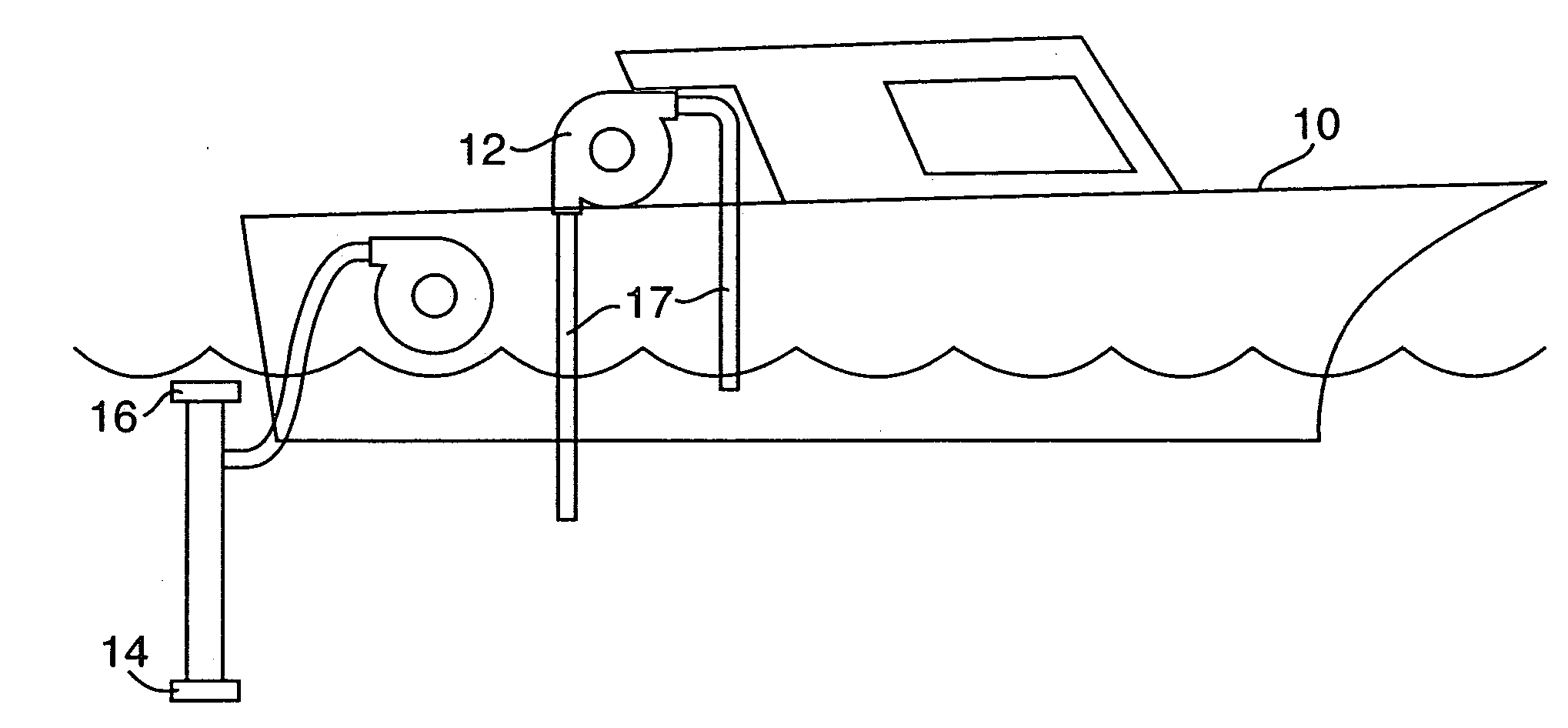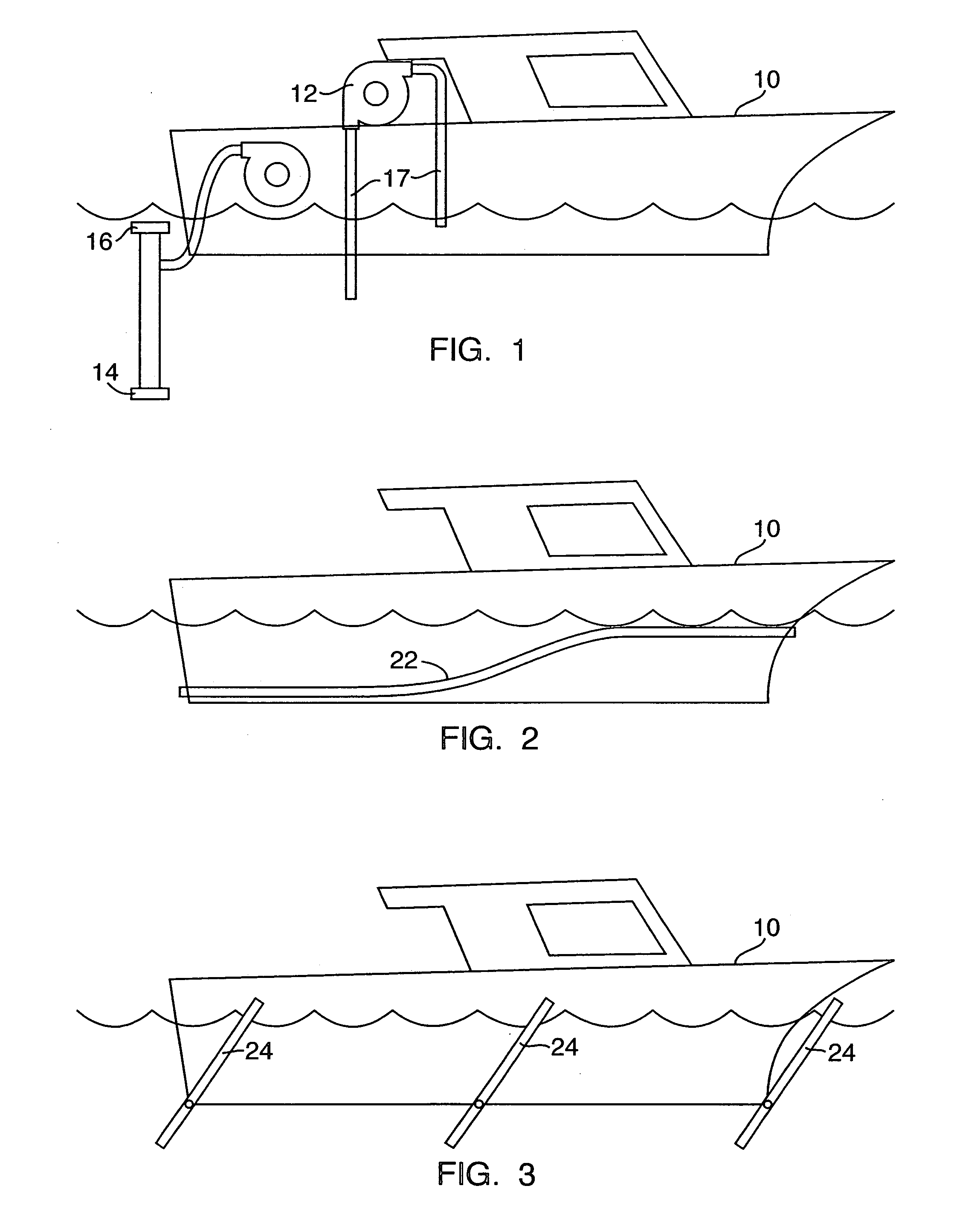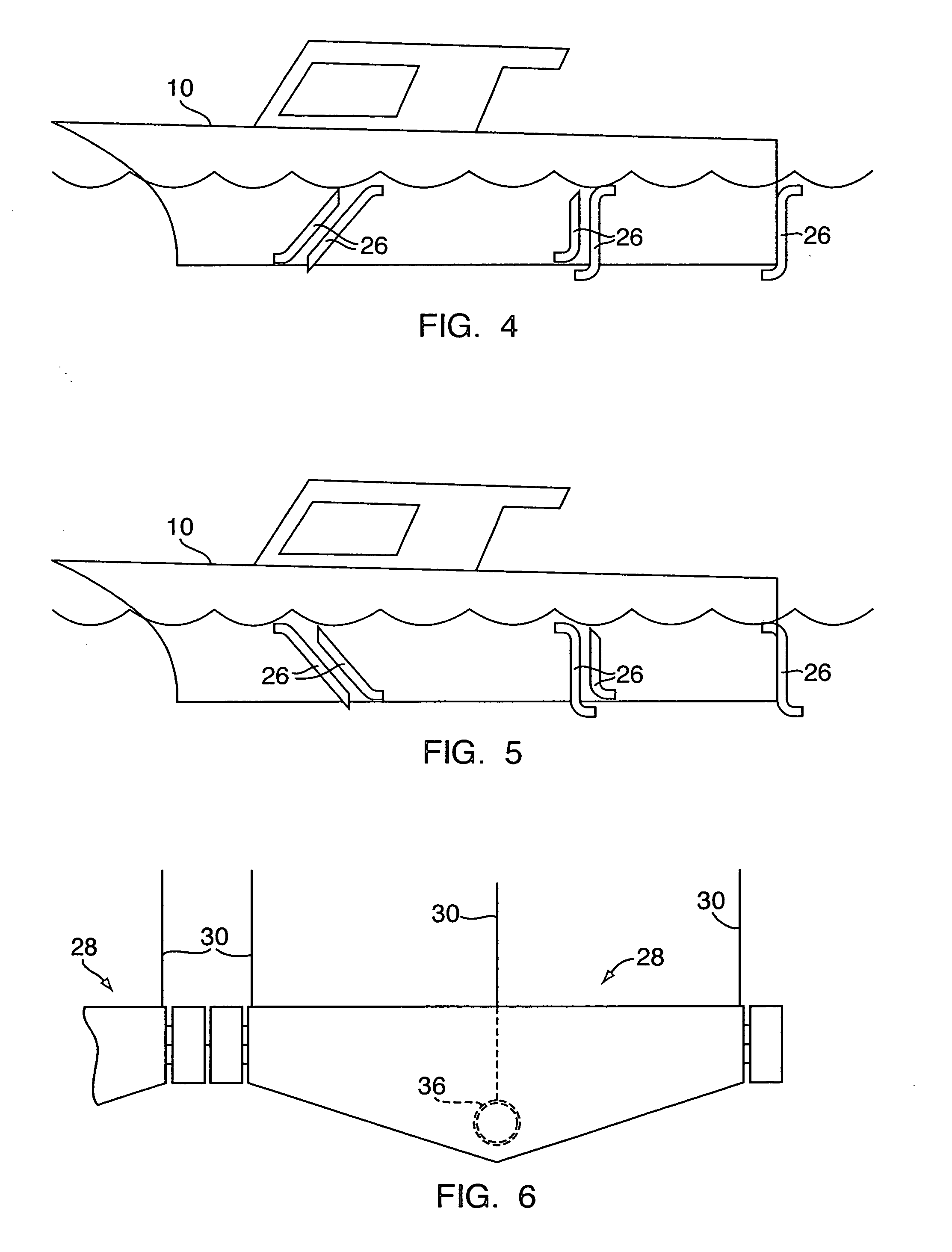Method for hurricane prevention
a technology for hurricanes and hurricanes, applied in waterborne vessels, special-purpose vessels, vessel construction, etc., can solve problems such as adding to the destructive force, destroying property, and injuring peopl
- Summary
- Abstract
- Description
- Claims
- Application Information
AI Technical Summary
Benefits of technology
Problems solved by technology
Method used
Image
Examples
Embodiment Construction
[0022] The present invention dissipates tropical cyclones by cooling the surface of ocean water in the path of a tropical cyclone. FIG. 1 shows one embodiment of the present invention. A ship 10 is equipped with a pump 12 having a lower end 14 and an upper end 16. The lower end 14 is exposed to the cooler ocean waters. The upper end 16 is exposed to the warm ocean water surface. Cooler water is pumped from the depths of the ocean through an opening in the lower end 14 up to the surface of the water through an opening in the upper end 16 or through separate pipes 17. This method cools the ocean water at the surface. With cooler water at the ocean surface, a tropical cyclone 18 will dissipate or weaken as it enters the cooler waters.
[0023] Pump 12 can be in the ship's hold, on deck, or both. The height of the intake piping is offset by siphon action of the discharge line. The water is not raised above its own level, and therefore, pumping is very efficient.
[0024] In addition, the sh...
PUM
 Login to View More
Login to View More Abstract
Description
Claims
Application Information
 Login to View More
Login to View More - R&D
- Intellectual Property
- Life Sciences
- Materials
- Tech Scout
- Unparalleled Data Quality
- Higher Quality Content
- 60% Fewer Hallucinations
Browse by: Latest US Patents, China's latest patents, Technical Efficacy Thesaurus, Application Domain, Technology Topic, Popular Technical Reports.
© 2025 PatSnap. All rights reserved.Legal|Privacy policy|Modern Slavery Act Transparency Statement|Sitemap|About US| Contact US: help@patsnap.com



